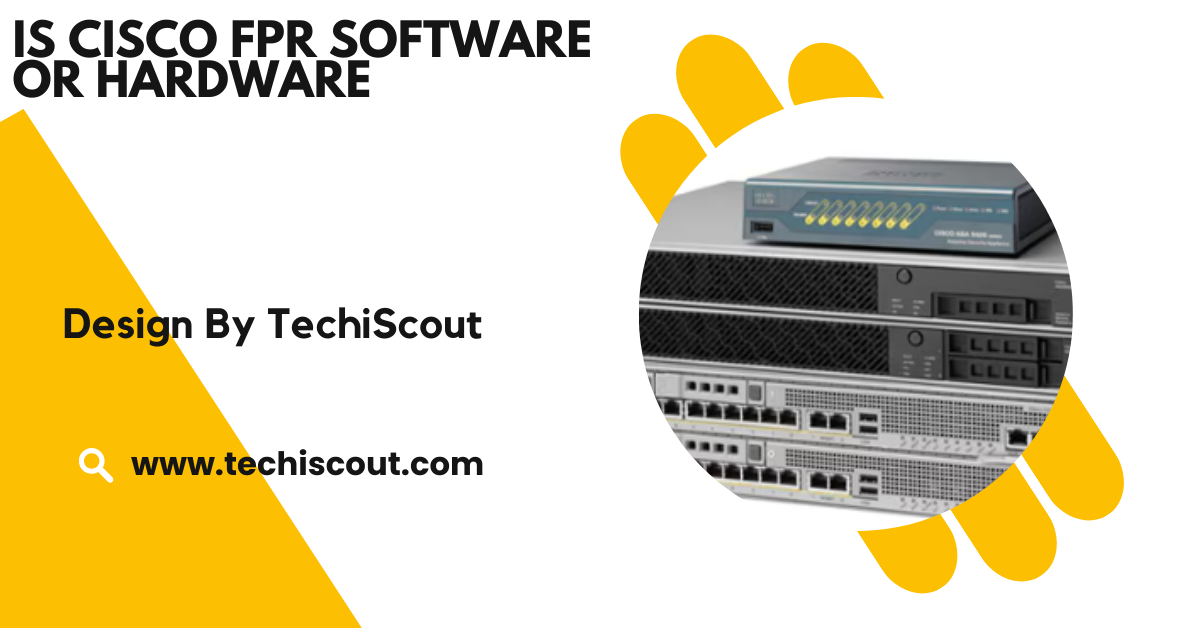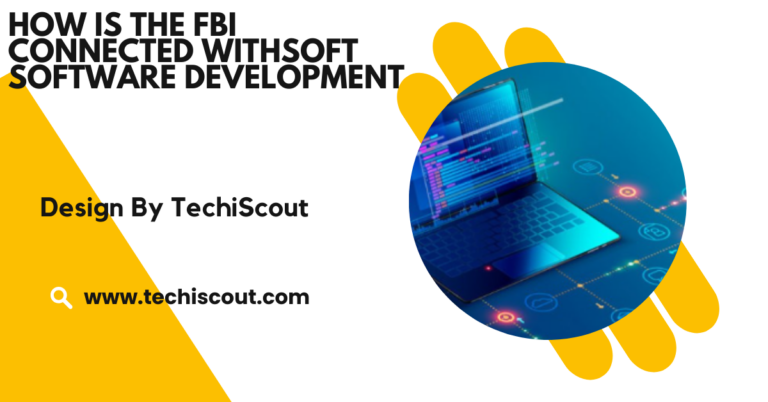Is Cisco Fpr Software Or Hardware – A Deep Dive into the Technology!
Cisco Firepower combines hardware and software for comprehensive network protection with high-performance security features.
In this article, we will explore what Cisco FPR is, its components, and how it integrates both software and hardware to deliver a comprehensive security solution.
Table of Contents
What is Cisco FPR?

Cisco Firepower (FPR) is an integrated suite of advanced security technologies designed to protect an organization’s network infrastructure from cyber threats.
Unlike traditional firewalls, which simply monitor traffic based on predefined rules, Cisco Firepower combines a robust set of security features, such as intrusion prevention systems (IPS), advanced malware protection (AMP), and URL filtering, to provide a multi-layered approach to network security.
Cisco Firepower uses a next-generation firewall (NGFW) model, which offers deep visibility into network traffic, allowing organizations to quickly detect and respond to threats. It also provides centralized management for easy deployment, monitoring, and policy enforcement across the entire network.
Key Features of Cisco Firepower Hardware:
- High-performance processors: The hardware comes with dedicated security processors that accelerate traffic analysis and threat detection. This is essential for keeping up with high-bandwidth traffic in modern networks.
- Network interfaces: Firepower appliances come with a range of network interface options, including copper, fiber, and SFP ports, enabling easy integration into existing network infrastructures.
- Scalability: Cisco’s Firepower hardware appliances can be easily scaled, from small entry-level models to large data center appliances, depending on the organization’s needs.
- Redundancy and reliability: Built with redundancy in mind, Cisco hardware ensures high availability, minimizing the risk of security lapses due to hardware failures.
The physical devices support throughput rates and have performance levels designed to keep pace with the most demanding traffic loads. Firepower hardware is optimized for use with Cisco’s security software, ensuring both elements work seamlessly together.
Cisco Firepower Software:
While hardware handles the physical infrastructure, Cisco Firepower software is the brain of the solution, providing all of the security intelligence and features that make Firepower effective at detecting, analyzing, and mitigating threats in real-time.
Cisco Firepower software includes the following key components:
Core Security Functions:
- Next-Generation Firewall (NGFW): Unlike traditional firewalls, Cisco Firepower provides deep packet inspection (DPI), application awareness, and context-based security policies to detect threats that might evade traditional firewalls.
- Intrusion Prevention System (IPS): Firepower includes an IPS that analyzes traffic in real-time to identify and prevent network intrusions. The IPS is designed to detect known and unknown attack signatures, providing an added layer of defense against both internal and external threats.
- Advanced Malware Protection (AMP): Cisco’s AMP provides comprehensive protection against malware, including zero-day threats. AMP uses a combination of signature-based detection, file analysis, and machine learning to block malicious files before they can infect the network.
- URL Filtering and Email Security: Cisco Firepower integrates URL filtering and email security, helping prevent employees from accessing harmful websites and phishing emails, which are common attack vectors.
Firepower Management Center (FMC):
- The Cisco Firepower Management Center (FMC) is a centralized management platform that allows network administrators to manage and configure Cisco Firepower appliances. Through the FMC, administrators can set security policies, monitor traffic, conduct threat analysis, and receive actionable alerts.
- The FMC provides visibility into network activity across both on-premise and cloud environments, allowing for a unified security approach regardless of where the traffic originates.
Real-Time Threat Intelligence:
- Cisco Firepower uses threat intelligence feeds to stay up-to-date with the latest known threats and vulnerabilities. The software continuously analyzes network traffic and updates threat signatures in real time to protect against emerging threats.
Read More: Can Having Other Antivirus Software Cause Pc To Sluggish
Cisco Firepower Threat Defense (FTD):
Cisco Firepower Threat Defense (FTD) is the software component that combines traditional firewall capabilities with more advanced security features like IPS, AMP, and URL filtering. FTD provides a unified solution that can be deployed on Cisco hardware appliances, virtualized environments, or in cloud architectures.
FTD is an essential part of the Firepower solution because it offers:
- Integrated threat defense capabilities: It brings together multiple security functions into a single platform, streamlining security operations.
- Consistent policy enforcement: Organizations can deploy consistent security policies across physical and virtual environments, simplifying management.
Benefits of Cisco FPR:
Cisco Firepower’s hybrid approach, integrating both software and hardware, delivers several key benefits that make it a top choice for enterprise-level cybersecurity:
1. Comprehensive Network Protection:
By combining both hardware and software, Cisco FPR provides a multi-layered defense system. The hardware ensures optimal performance while the software provides advanced security capabilities such as threat intelligence, intrusion detection, and malware protection.
2. Scalability:
Cisco Firepower’s hardware is scalable, meaning it can be deployed in a wide range of network environments—whether for small businesses or large enterprise data centers. The software also scales, providing flexibility to meet the evolving needs of modern networks.
3. Performance Without Compromise:
The Firepower hardware is engineered for high-performance security, ensuring that network speeds remain fast and secure, even when handling high traffic volumes. This high throughput is critical for maintaining network uptime and performance while still providing effective security.
4. Centralized Management and Reporting:
With the Firepower Management Center (FMC), administrators can gain complete visibility into network activity and apply consistent security policies across the organization. This centralized approach reduces the complexity of managing multiple security devices and software solutions.
5. Future-Proof Security:
Cisco continuously updates the Firepower software to address new and emerging threats. This ensures that businesses remain protected against the latest cyber threats, without requiring extensive hardware upgrades.
FAQs:
What is Cisco Firepower?
Cisco Firepower is an integrated suite of security technologies designed to protect networks with features like intrusion prevention, malware protection, and real-time threat detection.
Does Cisco Firepower use hardware or software?
Cisco Firepower uses both hardware and software; hardware appliances provide the physical infrastructure, while the software offers the security intelligence for real-time threat detection.
What does Cisco Firepower Hardware include?
It includes high-performance processors, scalable network interfaces, and redundancy features to support high traffic loads and ensure continuous protection.
What is Cisco Firepower Management Center (FMC)?
FMC is a centralized platform for managing Firepower appliances, setting security policies, and monitoring network traffic for real-time threat analysis.
Why is Cisco Firepower a good choice for businesses?
It offers a hybrid security solution that ensures scalability, high performance, centralized management, and future-proof protection against emerging cyber threats.
Conclusion:
In conclusion, Cisco Firepower is a hybrid solution that leverages both hardware and software components to provide a robust, next-generation firewall and security solution. The hardware handles the infrastructure, providing high performance and reliability, while the software delivers advanced features such as intrusion prevention, malware protection, and real-time threat intelligence.






